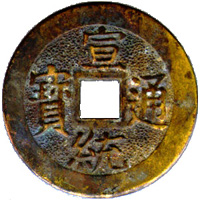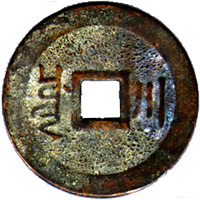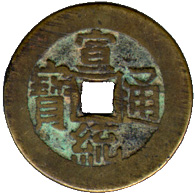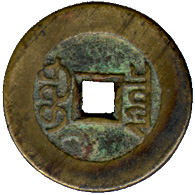| Obverse | Reverse | Description |
 |
 |
No. 042 |
| Mint: Szuchuan ? | ||
| Diam. 25 mm | ||
| Wt. 3.6 g. | ||
| Rareness ? | ||
 |
 |
No. 043 |
| Mint: Peking | ||
| Diam. 24 mm | ||
| Wt. 4.2 g. | ||
| Rareness D | ||
| Mint Evolution and Peculiarity | ||
| The upper brass circular coin was struck by machinery, and the lower copper cash was minted by the tranditional casting method.
Inscriptions of both of these two coins are reading from top to bottom and right to left [direct reading]. Inscriptions bearing on the obverse of these two coins are Chinese characters "Hsuan T'ung T'ung Pao", with the meaning of "Hsuan T'ung Current Coin".
On the reverse of the upper coin are two characters "Ch'uan" [Szechuen Mint] in both Manchu [left] and Han [right] scripts on either side of the hole. The inscriptions on the reverse of the lower coin are Manchu characters "Pao" [left] and "Chuan" [right], meaning Hu-pu Pao Chuan Chu | ||
 [Board of Revenue].
[Board of Revenue].